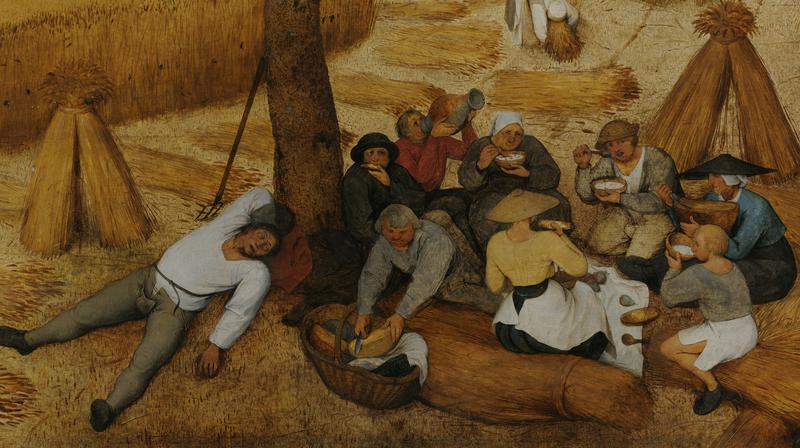Why Medieval Serfs Had More Vacation Time Than You Do Today
By | September 30, 2019

Modern technology and social changes have, generally speaking, made the world a better place. Medical advances such as antibiotics, inoculation, preventative medicine, and hygiene have all contributed to longer, healthier lives. Curiously, recent scholarship has shown where modern society is lacking over our medieval forebearers: Leisure.

According to the Bureau of Labor Statistics, the average American worker received 15 paid vacation days after five years of service in 2017. In contrast, nations such as France are much more generous with their paid vacation days, routinely giving 30. However, even modern French workers would drool in jealousy if they found out how many days vacation the average European medieval peasant got: Between one third to half of the year.
Granted the work of a medieval serf was much more physical and laborious than most modern workers. Still, the labor, which almost always was agricultural, was dependent on seasons which meant that there were extended slack times throughout the working year. This meant that during certain times of the year, such as planting and harvest, a serf would work more hours in a week than a modern worker.

The tempo of work in the Middle Ages was different as well. Customary breaks throughout the day were common and depending on location might include breakfast, mid-morning break, lunch, afternoon nap, mid-afternoon break, and dinner. All told, the medieval laborer’s workday was not more than eight hours. According to Juliet B. Schor author of The Overworked American: The Unexpected Decline of Leisure, work hours also typically fell when wages were higher. That is if a peasant earned more, they worked only as much as they needed to and took off the rest. Schor calculated that during a period of high wages, such as in the late 14th century, peasants worked about 120 days per year for a probable total of 1,440 hours compared with the average American putting in about 1,800 hours per year in 2017.

Aside from a seasonal work rhythm and irregular hours, medieval people also benefited from a Church calendar that was filled with holidays and feasts which mandated time off. For example, the longest holiday was the twelve days of Christmas which marked the birth of Jesus to the coming of the magi. A week was given at Easter and there was one or more festivals every month. In the year 1200, there were about 45 yearly church feasts in England celebrating various parts and figures of the New Testament. Then there were personal leaves for weddings, baptisms, and births.

Schor writes, “All told, holiday leisure time in medieval England took up probably about one-third of the year. And the English were apparently working harder than their neighbors. The ancient règime in France is reported to have guaranteed fifty-two Sundays, ninety rest days, and thirty-eight holidays. In Spain, travelers noted that holidays totaled five months per year.”

So why don’t we have such a generous calendar now? As mentioned, preindustrial, agrarian societies were much more seasonal in nature. In the 19th century, with the coming of the industrial revolution and the growth of modern capitalism, there was no need to adhere to that schedule. As factory work grew increasingly in importance so too did the power of the captains of industry who demanded longer working days with less time off. Fourteen to sixteen hour working days were not unusual. In fact, the late 19th and early 20th-century movement for an 8-hour workday just seem to be a call to get at least partially back to where working conditions were many centuries ago. It should be noted that the 8-hour workdays seem to be a thing of the past as people now routinely put in more hours per week. This increased level of stress is associated with all sorts of health maladies.
But before you get into your time machine to go work on a medieval manor, just remember that the technological and quality of life benefits now may equate the leisure time available in the middle ages.
Of course you may not have time enough to enjoy those benefits.

